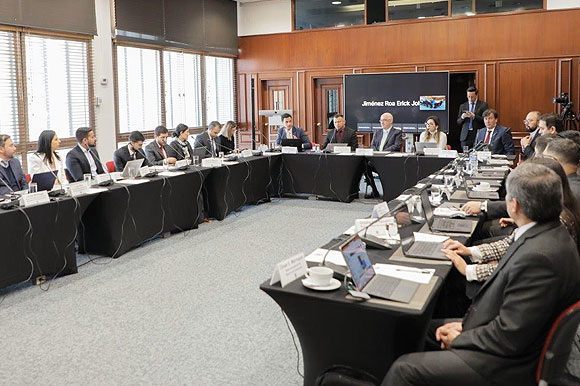Opening Speech of the 24th Meeting of the Regional Financial Stability Group
Los documentos son de carácter informativo y académicos, las opiniones y posibles errores son responsabilidad exclusiva del autor y sus contenidos no comprometen al Banco de la República ni a su Junta Directiva.
I am very pleased to welcome you to Bogotá and to this 24th meeting of the Regional Financial Stability Group , which has been organized on this opportunity by Banco de la República (the Central Bank of Colombia) together with the Central American Monetary Council .We are honored to host this important meeting in the year of the Bank's first centennial celebration.
It would be difficult to find a more appropriate time for this meeting than today, after two weeks of great turbulence in the international financial markets.
The illiquidity situations faced by the Silicon Valley Bank (SVB) and Signature Bank less than fifteen days ago raised the dramatic possibility of the loss of deposits in these institutions, most of which were uninsured. Had this happened, we would have probably also seen a widespread run on deposits in about 4,900 regional banks in the United States for which the liquidity standards that had been established by the Basel Committee following the 2008-2009 crisis were suspended a few years ago.
Fortunately, the Federal Reserve System backed all the deposits, granting rediscount credits against the nominal value of the securities and without any haircut. This averted a major crisis, but clearly with a high potential cost insofar as it will receive securities valued at prices well above market prices.
The other major episode that has recently affected the global financial system is the loss of confidence in Credit Suisse and its absorption by the Union Bank of Switzerland (UBS) in an emergency intervention operation carried out last week under the supervision of the Swiss National Bank. Once again, this operation made evident the critical role played by central banks, not only because of their supervisory role when they have one but also because of the need that arises in crises to provide huge amounts of liquidity to support confidence in the system. As a result, the Swiss National Bank had to make available amounts of more than 100 billion Swiss francs to the banks in question.
These episodes from the last two weeks are good examples of how central banks end up being ultimately responsible for the possible failures in the financial system. This is so even in countries like Colombia, where financial oversight lies in a separate institution from the central bank. For instance, in 1999, almost a quarter of a century ago, Banco de la República responded to the biggest financial crisis since the Great Depression of 1929.
In this context, the importance of monitoring financial stability is evident, obviously by supervisory bodies, but also by central banks that are not directly responsible for this task.
During the last decades, we have observed how Colombian banks have expanded significantly toward different Central American countries. Specifically, Colombia's foreign banking assets-a good part of them in Central America-currently represent 22% of the consolidated assets of credit institutions. This international presence undoubtedly brings great benefits to the Colombian financial system through greater diversification.
However, this expansion of Colombian banking entities in Central America also comes with greater complexity in the activities and risks assumed by these institutions through their operations in the region. In turn, this creates the need to better understand the conditions and characteristics of the different economies and thus be able to monitor more closely and assess the ability of financial institutions to withstand different shocks.
Multilateral organizations such as the International Monetary Fund and the World Bank have recognized the significant progress made by Colombia in this regard through the Financial Sector Assessment Program (FSAP), which includes the identification and regulation of local financial conglomerates and the incorporation of Central American exposures in the stress testing developed by Banco de la República. Although this assessment evidences satisfactory progress, improvement opportunities in the analysis of the risks to which we are exposed in the region were also identified.
Although this Regional Financial Stability Group to which you belong was established in 2011, Colombia's participation began in September 2014, when it signed the “Cooperation Agreement for the Preservation of Regional Financial Stability .” Since then, our officials have permanently participated in the annual meetings emanating from the Agreement. In addition, we have also been permanent users of the Regional Financial Stability Report, which has been very enriching for Banco de la República.
During the next two days, you will be presenting and discussing the regulation, operation, dynamics, and experience of the liquidity measures available in each jurisdiction. Also, the situation of foreign currency mismatches in the different financial systems will be reviewed, as well as the current policies and measures available to manage this risk and other issues. I am confident that these spaces will allow the sharing of information and experiences and will serve to promote new regional cooperation initiatives to strengthen financial stability.
I wish you every success in your deliberations and, of course, I hope you enjoy your stay in Bogotá.
Thank you very much.
Video of the speech (Only in Spanish)




Officials of the Regional Financial Stability Group, Governor of Banco de la República, representatives of the Central American Monetary Council, and executives from Banco de la República.
The event will be held at the main office of Banco de la República on March 22 and 23.




















































